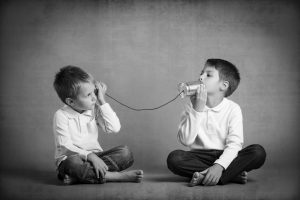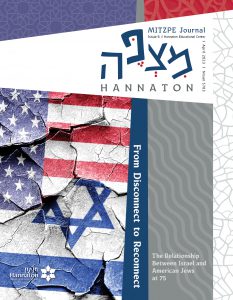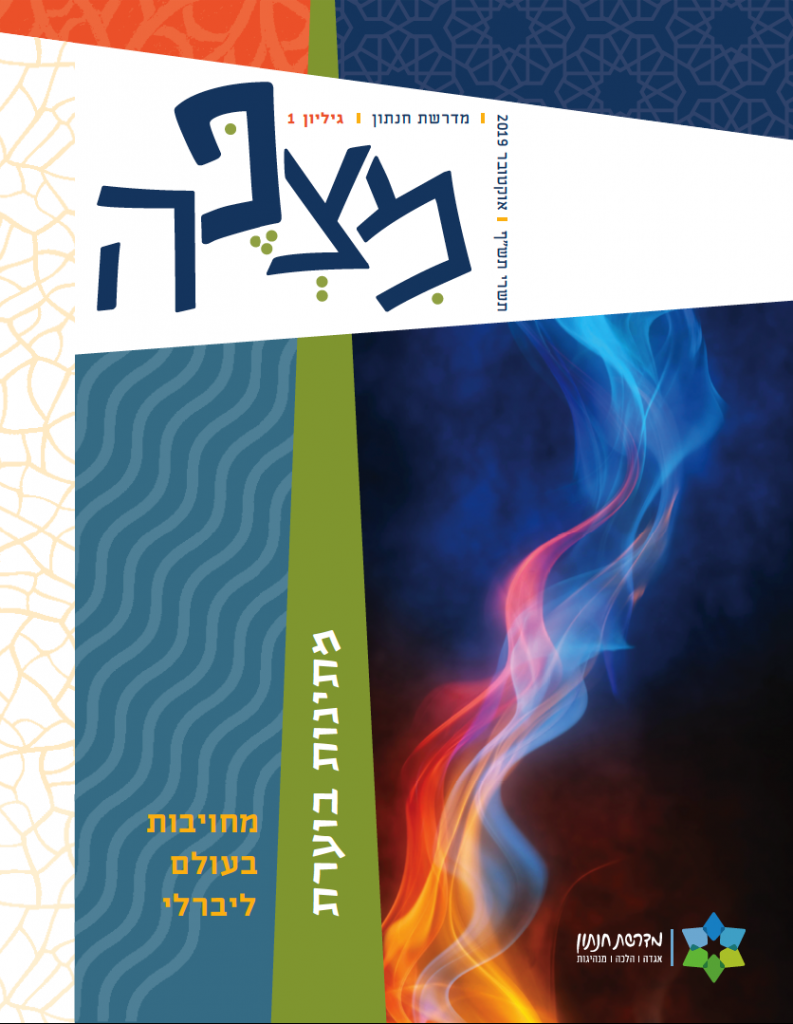We need to learn a passionate language—whether for a political campaign or in prayer or study—a language that fearlessly activates the spirit and soul and leads to a deep experience of the world and of reality. This is the language of virtual reality.
Now Moses was tending the flock of Jethro, his father-in-law, the priest of Midian, and he led the flock to the far side of the wilderness and came to Horeb, the mountain of God. There the angel of the Lord appeared to him in flames of fire from within a bush. Moses saw that though the bush was on fire it did not burn up. So Moses thought, I will go over and see this strange sight—why the bush does not burn up. When the Lord saw that he had gone over to look, God called to him from within the bush, Moses! Moses! And Moses said, Here I am (Exod. 3:1–4).
I wish we knew how to hold exhilarating, touching, truthful conversations that would still allow us to maintain complexity. But this ability requires practice. It requires facing our fears and the ability to experience others without losing ourselves in them.
The first story that is told about Moses as an adult presents us with a man burning with a fervor for justice but incapable of containing this fire: “One day, after Moses had grown up, he went out to where his own people were and watched them at their hard labor. He saw an Egyptian beating a Hebrew, one of his own people. Looking this way and that and seeing no one, he killed the Egyptian and hid him in the sand” (Exod. 2:11–12).
As Pharaoh’s (adopted) son, he may have been able to stop the Egyptian without killing him. But something in him burst and he became a killer. And if he thought that this would remain his secret, by the next day it was already clear that everyone knew:
The next day he went out and saw two Hebrews fighting. He asked the one in the wrong, Why are you hitting your fellow Hebrew? The man said, who made you ruler and judge over us? Are you thinking of killing me as you killed the Egyptian? Then Moses was afraid and thought, What I did must have become known. When Pharaoh heard of this, he tried to kill Moses, but Moses fled from Pharaoh and went to live in Midian, where he sat down by a well (Exod. 2:13–15).
Moses’ inability to contain the harsh reality he had witnessed caused him to respond in such a way that he was then compelled to flee his home and homeland as well as from the flame that burned within him. From a potential leader he transformed himself into a shepherd hiding in the desert.
How would Moses have responded if he had been taught a more complex language for human relationships? Even if he was just and righteous, even if the truth in all its intensity belonged to him—in actual fact, Moses began his leadership career with murder.
I believe that there is an urgent need to relearn passionate and captivating language—whether for a political campaign or in prayer or study. I do not mean passionate necessarily in terms of external noise but rather one that is capable of fearlessly activating our own spirit and soul, and those of the people around us. I mean a language that enables us to reach a deeper experience of the world and of reality, because sometimes we hide behind words such as “moderation” in order to avoid realizing our conceptual world in practice.
There is no question that we must aim to be more passionate and enticing with presenting our vision of the complexity that we bring to the world. What I would like to explore here is a tool that might be beneficial for practicing complexity, namely the technology of virtual reality (VR).
As I see it, VR is particularly interesting because when in VR, most of our senses become separated from the external, real world and receive all their information from a computer. In other words, in our minds, we are in a separate reality, and this might cause us to feel like some other kind of being, in some other place, with different physical laws. In such a space, we can come into contact with things that scare us or are dangerous for us; we also may have more courage or stamina to try to deal with them. This ability is important if we wish to create a more complex language because when entering into an imagined space, we let ourselves become immersed in an experience with no concern of actual physical harm.
Before we continue, I would like to return to the quotation with which I opened this article—about Moses and the burning bush—and propose a reading that understands Moses’ experience as a type of VR. In this reading, Moses finds himself in an encounter with a reality that is completely outside that which he perceives as familiar and possible (some might call this a miracle, but at the moment I am less interested in the question of whether miracles exist in the world, and more interested in examining the human response to a reality that is outside the normal).
In Moses’ actual world, something that is on fire would eventually burn, but in this situation Moses is confronted with another possibility—a reality in which something can be on fire without burning. I agree that all this would have been even more interesting if Moses had reached his hand into the flames to test them, but regretfully this is not part of the story. It may have happened and it may have not. But Moses’ encounter with the burning bush lets him begin to free himself from the burden of reality as known to him and understand that there are other ways of experiencing the world; a staff may be transformed into a serpent, and leprosy can appear and disappear from the body. This experience that Moses undergoes allows him to set aside his fears, and when he goes back into the real world, he changes reality.
Let’s return to VR. Although VR technology has existed for quite a few decades, only in recent years has it become more available to the public, and its usage is now very diverse—from games to simulators for studying medicine and flying, to artwork that raises social and political awareness.
VR differs from augmented reality; in the former we block most of our senses from the external world and bring our entire consciousness, including the physical, into another space—an imagined one.
It is important to take a moment to clarify that I approach this technology with all my reverence for powerful tools, such as knives and flying and writing and fire. VR, like these other tools, also offers a powerful invention, but also the potential for pain; by virtue of the mere fact that it makes possible human experiences that we have not yet experienced and in which we have no idea how to conduct ourselves. Our role is to educate ourselves to use them wisely. I would even say that as in other cases when we have invented powerful tools, here too it would be beneficial for us to create a certain “sanctification” of the tool, some myth that would preserve a deep reverence for it even when using it becomes routine.
In this context it is interesting to explore the following statement:
A scroll on which the writing has become erased and eighty-five letters remain, as many as are in the section beginning, ‘And it came to pass when the ark set forward’ (Num. 10:35), defiles the hands. A single sheet on which there are written eighty-five letters, as many as are in the section beginning ‘And it came to pass when the ark set forward,’ defiles the hands. All the Holy Scriptures defile the hands (m. Yad. 3:5, Maimonides version).
Most of the debate in Tractate Yadayim deals with cases in which we become defiled by contact with items where the defilement is comprehensible, such as afflictions and the like. The tractate also deals with how water, clothes, tools, and more are rendered unfit for use as a result of contact with something that is unclean (whether physical or ritual uncleanliness). But at some stage a question concerning written letters arises, and here it seems that the written text itself is a danger to us. Preceding the current mishna it says: “The straps of the tefillin with the tefillin defile the hands. Rabbi Shimon says: the straps of the tefillin do not defile the hands” (m. Yad 3:3, Maimonides version). That is, the straps of the tefillin do not defile the hands unless the written text is within them.
So the mishna has no argument about the written text being sacred, but this involves the understanding that its sanctity derives from the same place where it might be dangerous or at risk of defilement. The same understanding whereby sanctity, danger, and impurity are connected can be found in the story of the tree of knowledge of good and evil, in the story of stealing the fire from the gods (see Prometheus, for example), and in other examples. Powerful technology requires a mighty surrounding myth and protections against its power, for fear that otherwise, we will fail to use the technology with care.
And here we return to VR and to the recognition that when attempting to investigate this technology, we would do well to create rituals and practices so that we can enjoy the good that it brings without being burned.
One of the strengths of VR is that it allows us to experience ourselves and our body in new ways. A favorite example of mine is a study showing that people can learn to control tails grown by their avatars in a simulation. This means that our brains can identify with a body part we once had but lost in the process of evolution and experience it anew.
Many studies show that height, skin color, and gender have effects on social status within online interactions as they do in the real world. This is because we bring our prejudices with us into any world we occupy. It appears that technology, just by its mere existence, cannot fix anything. It just allows us to try new ways to change ourselves.
So how can this technology be useful, particularly in a context where we wish to let ourselves experience reality in all its complexity with less fear and concerns?
Some argue that the VR experience can serve as an empathy instrument (Alsever, 2015), helping us develop deeper levels of empathy, since we experience the “life of others” in a manner that is normally impossible. Indeed, there is something about this particular technology that draws us closer to the experiences of others—more than films or books or even online forums. The VR tool as a means of telling a personal story is still in its initial stages, but virtual experiences aimed at bringing users into the physical and emotional reality of others are already being created, including attempts to simulate how a color- blind person sees, or an old woman walks, or a young refugee experiences a new city for the first time.
VR director Chris Milk created a film called “Clouds Over Sidra,” sponsored by the UN, which takes observers into the life of a Syrian girl living in a Jordanian refugee camp. Of course, observers can return to the safe haven of their lives in a peaceful country the moment they take off the headset. But they may do so possessing a different sense of that particular experience, or another layer of understanding regarding a reality that is different than their own. In turn, this experience will create a sense of urgency that will cause a person to raise her voice and cry out against the life that the Syrian girl must live.
This year, the Youth Wing of the Israel Museum displayed the media installation “Visitors” by artist Daniel Landau, in which visitors were invited to “enter” the living rooms of an Israeli family and of a Palestinian one and listen to them. We all understand that facing someone in her own living room lets us listen to her story in a completely different way than reading about it in a post on Facebook. But the intimacy presented by the exhibit is partial, imagined. Still, the exhibit is powerful and affords a protected space for the vulnerable act of listening to another whose very existence may feel threatening to me.
If so, the “empathy instrument” is a tool that facilitates encounters not only with other people and their significant stories but also with oneself opposite any potential destabilizing element. In this context, it is interesting to think of the suggestion by VR researcher Jeremy Beilenson that use of this technology should be reserved for situations where other methods are not constructive (Recode Staff, 2018). It is not an easy act for the body and consciousness to become immersed in another space and therefore, in his opinion, it should be done prudently, only when use of this tool can enable us to experience things that could not be experienced otherwise. The words “could not be” are directed both at the physical dimension (for instance, moving around in a body with a tail) and at the emotional dimension (dealing with a traumatic experience). When there is a tool that enables us to unexpectedly experience a reality that was previously beyond our grasp, we might suddenly reach a different understanding of the world and of our place in it. Once again, the experience is deeper than reading a book or even watching a movie, as the entire body experiences this other reality. I am still “me” (i.e., I am conscious of my own presence and my own reactions to the surrounding reality that has changed), but this “me” is a little different.
Here I would like to refer the readers to the words of Jaron Lanier regarding the experience of taking off the headset and leaving the instrument. Lanier is one of the founding initiators of the field of VR and he has been investigating and developing VR tools for decades. In an interview with Ezra Klein (2019), Lanier relates that one of his favorite moments is leaving the system and returning to “realistic” reality In his opinion, it is precisely after spending time in the simulator that the encounter with reality gains extra intensity: the actual colors of the world, the amazingly high resolution that can be reached, the touch and sound that exist around us; perhaps we might call it the complex, but at the same time, perfect reality in which we live.
Everything I have written here is only the very tip of a mighty and deep domain that seeks to explore what defines the “I” as an “I,” and to what degree one “I” can experience the momentary or continuous existence of another “I.” VR is, in fact, a game that lets us jump into places within ourselves that we may not have dared to touch, and into situations that we may not have encountered or been able to enter. And like Moses facing the burning bush, we should only have the privilege of practicing enough, in such a way that will make it possible for us to go out and change the world.





